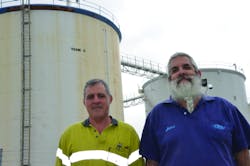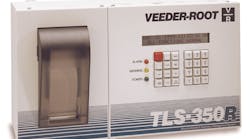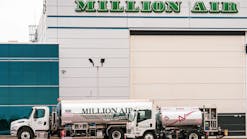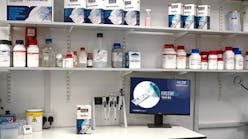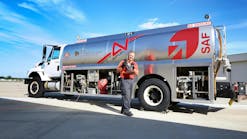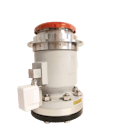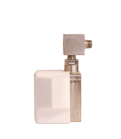Fixing all the big stuff is pretty well organized. There are databases and software that track what maintenance is required and when. If something needs repair, it gets a fault tag attached and put into the workshop for attention.
Around every airport skilled maintenance technicians and engineers work away in their hangers, workshops and test rigs to keep things working and safe for everyone.
What everyone is looking for is hands-on experience and a commitment not to let anything back into the system without being tested and signed off as right.
Meet Jeff Langtip and John Cora
One group of maintenance service providers is C&L Sales. They are based at Sydney Airport. They provide a specialist mainanence service to all the major fuel suppliers at Sydney International Airport, Kingsford Smith.
Jeff has the experience when it comes to the vehicle side of fuel supply – the trucks and all the fuel delivery systems on board. John is the fixed facility expert: pipes, pumps, valves, hydrants and the maze of monitoring and safety gear that gets the product from the fuel farm to the aircraft.
History
Most airports will have tucked away out of sight similar businesses doing the same type of work. What makes C&L a bit different is that these guys have known each other since they were 15 year olds. They worked together and learned their trades together, did the hard yards together and then started their own business back in 1988.
All these years later they still enjoy each other’s company and are best friends.
The business has built over the years as Sydney Airport has grown. Sydney is a busy airport, handling about 300, 000 aircraft movements a year, much of that long haul traffic is led by Qantas. Sydney is the hub for Qantas and Jetstar operations.
It is also the international gateway for carriers from every corner of the aviation globe. For most of these carriers, this is long haul and they need to refuel before they go anywhere. In fuel supply terms, it is large volumes that are ordered.
C&L has a permanent staff of 10 on the site. This is augmented by additional help and assistance provided from the ranks of the fuel suppliers, equipment manufacturers and Qantas Engineering who all provide input where necessary. All have worked together over the years on the problems and the solutions and a strong and healthy mutual respect has been built up.
The staff all has their trade qualifications as electricians, mechanics, fitters and engineers.
The work, however, is so specialized that it is that real teacher “experience’ that equips the team for the work involved.
“It usually comes down to knowing the equipment – knowing the history of each part and where it has been used. We keep our own detailed records as well as relying on our customers own database. It is good to be able to source that background on any modifications and idiosyncrasy of a particular part.” says John, making this observation while working at the bench to replace a set of rings on a coupling that looks like it has seen better days on the outside. Internally, the unit looks as good as the day it left the factory. He has been across that life and knows the backstory.
“While the parts manufacturers and suppliers are able to pick up very useful information from us on their own gear, and we talk regularly and give them feedback, but the costs of making serious design changes are just too high so the basic units remain much the same over the years” Jeff observes, while he checks the computer for what he hopes will be a manufacturer's Product Bulletin update.
Changes have mainly been in the introduction of new technology and C&L have now a specialist IT technician who they call on for computer-based systems.
John explains it this way, “On the one hand we have to keep some aging infrastructure up to specs and pass all the audit inspections – on the other side of the equation we have new plant that is superior in most respects but is often over engineered and can create problems for us – more things to go wrong in what is a harsh work environment for any sensitive equipment. Ask around the workshop and the longer serving staff will vote for pneumatic solutions as being more robust and reliable than computerised systems where dust, dirt and weather can quickly take a toll on performance.”
C&L are regional agents for several products. That makes for a business stream as well as keeping them in the information loop. They have a sales person who handles this side of the business. Avery Hardoll, Whittaker, Gammon and Alfons-Haar are some of the companies represented.
Other maintenance providers in the Australian and New Zealand area appreciate that they are being looked after by a business that is doing the hands on work like them and not just a passive importer.
Training
At C&L the mix of customers require service on a variety of equipment, some modified and have ancillary safety fixtures incorporated – they do all operate under the same broad industry benchmark as set out in the JIG [Joint Industry Guidelines] IATA also publishes the standards which the airlines follow, so the general parameters are universal.
C&L's reputation for getting the job done and their commitment to quality workmanship has brought them into several consultancy projects. In recent months training workshops in Indonesia for Pertamina in conjunction with the ARCS {Aviation Refuelling Compliance Solutions ] group is one example. Maintenance supervisors across the Pertamina Aviation business were brought into Surabaya for a hands on “master class’ run by ARCS CEO Richmond Hannah alongside Jeff and John. All the training was recorded on video and will become a part of the Indonesian companies training packages.
Despite some language differences, the learning message certainly got through. These Australian guys know their stuff and after 20 years remain enthusiastic and determined to getting it right.
We end the interview and suggest dinner, but that will have to wait till next time. Tonight there is an urgent job that has to be done at the Fuel depot that will take most of the night. Sydney Airport night curfew means they can get in and finish while the JUHI is shut down between 1100 and 0600.
C&L may be well in the background, but it is this is just the sort of small business enterprise that keeps so many parts of the bigger Ground Support picture running all over the global aviation network.
